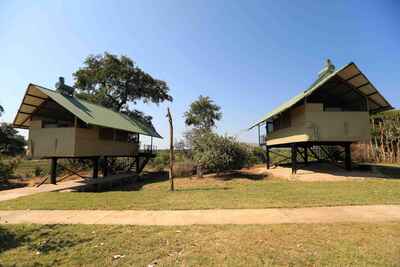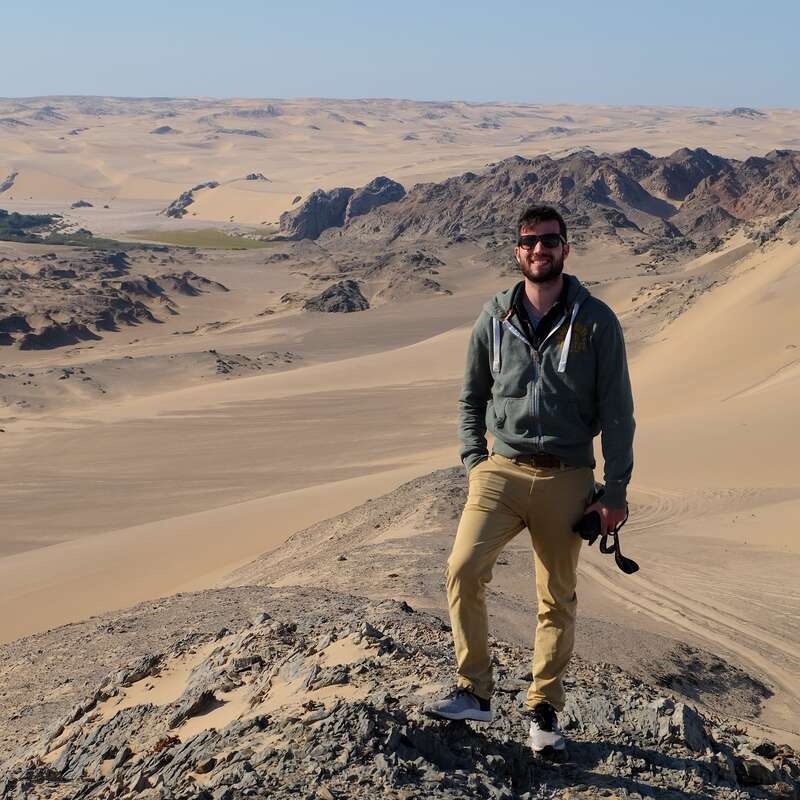About Kavinga Safari Camp
Kavinga Safari Camp is one of the few properties in Zimbabwe’s Mana Pools National Park not based on the ...
... banks of the Zambezi River. Instead it lies atop a hill in a private reserve on the southern boundary of the park, a full 42km from the river. Overlooking the ephemeral Ruckomechi River, Kavinga has scenic views of the Zambezi escarpment, surrounding bush and the camp’s showpiece, its waterhole.
Kavinga is a comfortable tented camp in an unusual part of Mana Pools. We were unsure what to expect but were pleasantly surprised. The area is surprisingly rich with wildlife, the activities were well run and nicely thought out and we were impressed by the unique hide. This is a great option for those looking to experience Mana Pools in a little more detail than the average traveller, for those with a little more time in the park, or for those who want to get close to the action from the hide.
Our view
Kavinga is a comfortable tented camp in an unusual part of Mana Pools. We were unsure what to expect but were pleasantly surprised. The area is surprisingly rich with wildlife, the activities were well run and nicely thought out and we were impressed by the unique hide. This is a great option for those looking to experience Mana Pools in a little more detail than the average traveller, for those with a little more time in the park, or for those who want to get close to the action from the hide.
Accommodation
7 tents
Children
Best for 13+
Open
1 Apr–10 Dec.
Activities

4WD Safari

Birdwatching

Guided walking safari

Night drive

Private activities
Traveller reviews of Kavinga Safari Camp
3 real, un-edited reviews from Expert Africa's travellers.
Arrived 2 Sep 2022, 4 nights
"Kavinga Safari Camp review"
Overall rating: Excellent
Arrived 25 Jul 2022, 3 nights
"Kavinga Safari Camp review"
Overall rating: Good
Arrived 15 Aug 2021, 3 nights
"Kavinga Safari Camp review"
Overall rating: Excellent
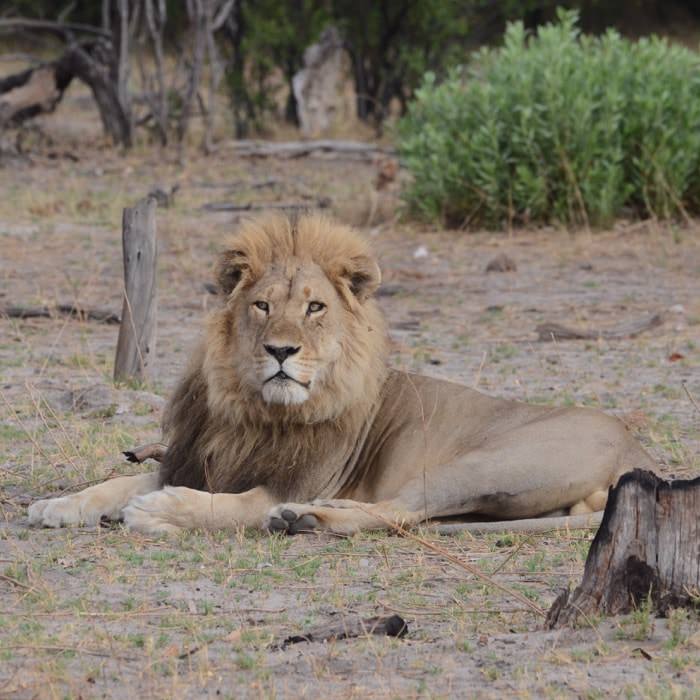
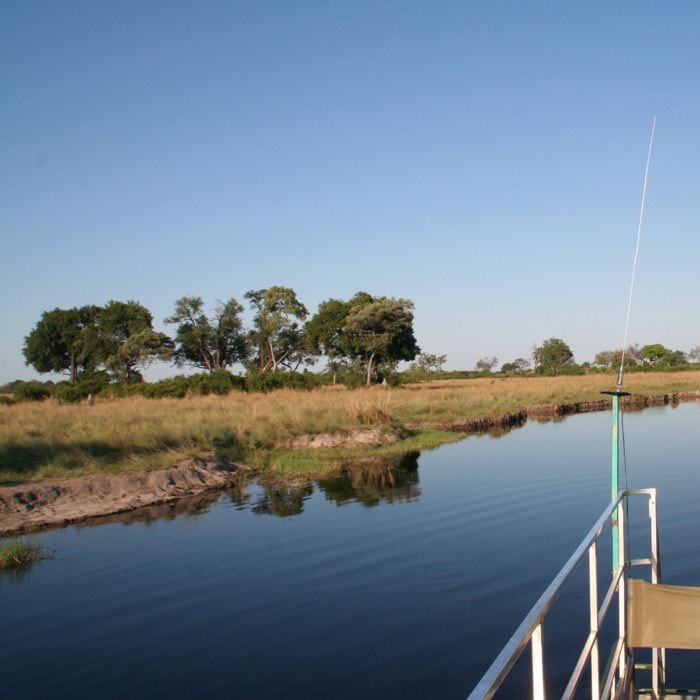
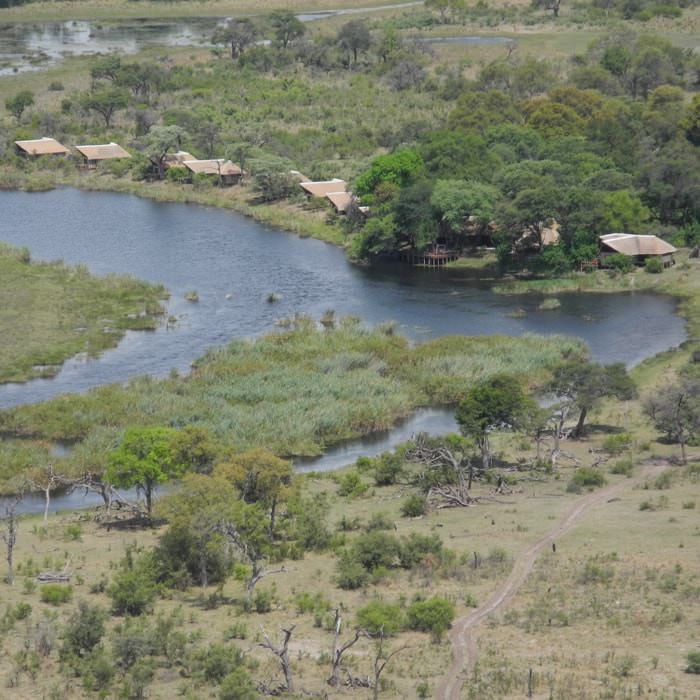
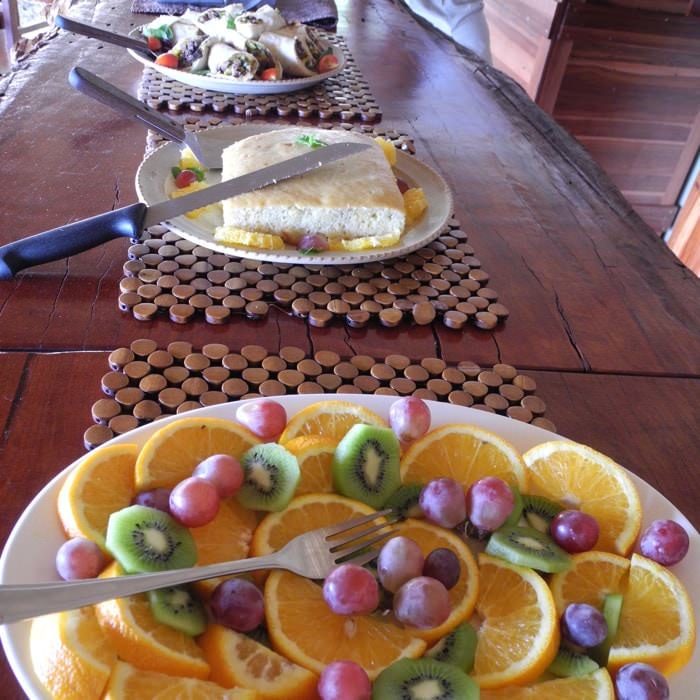
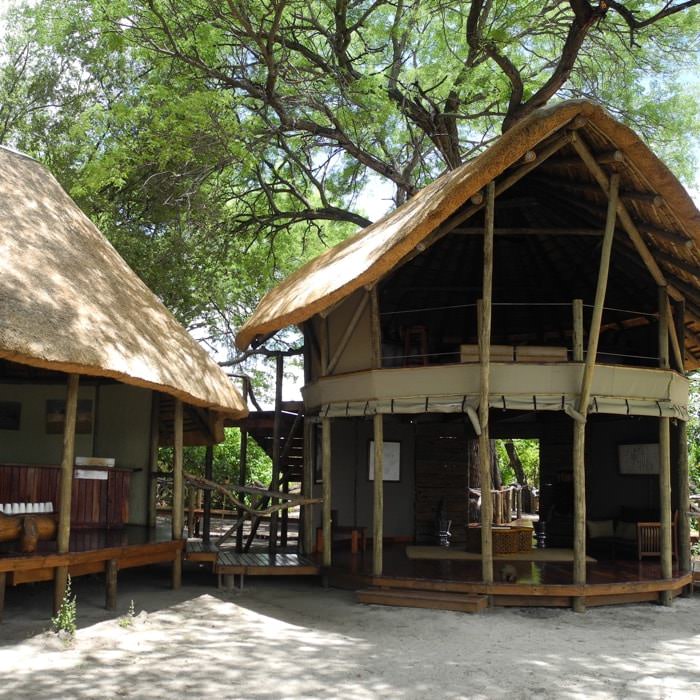
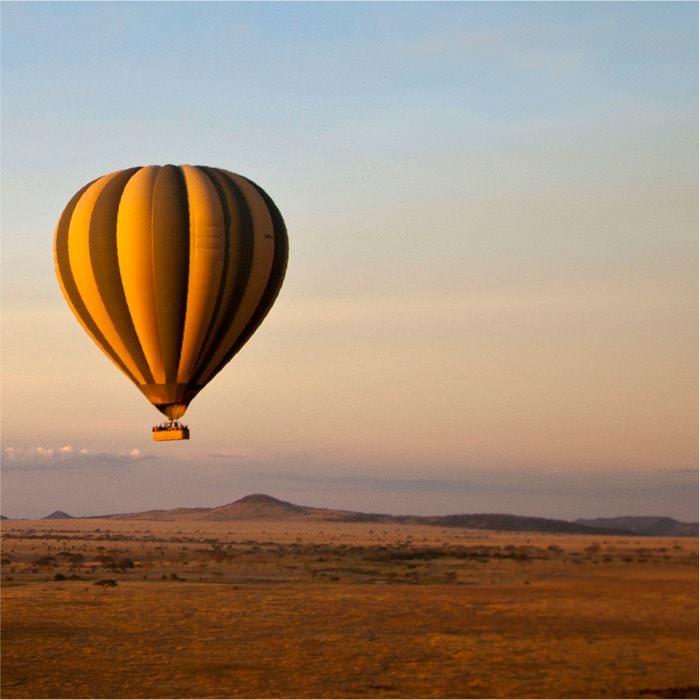
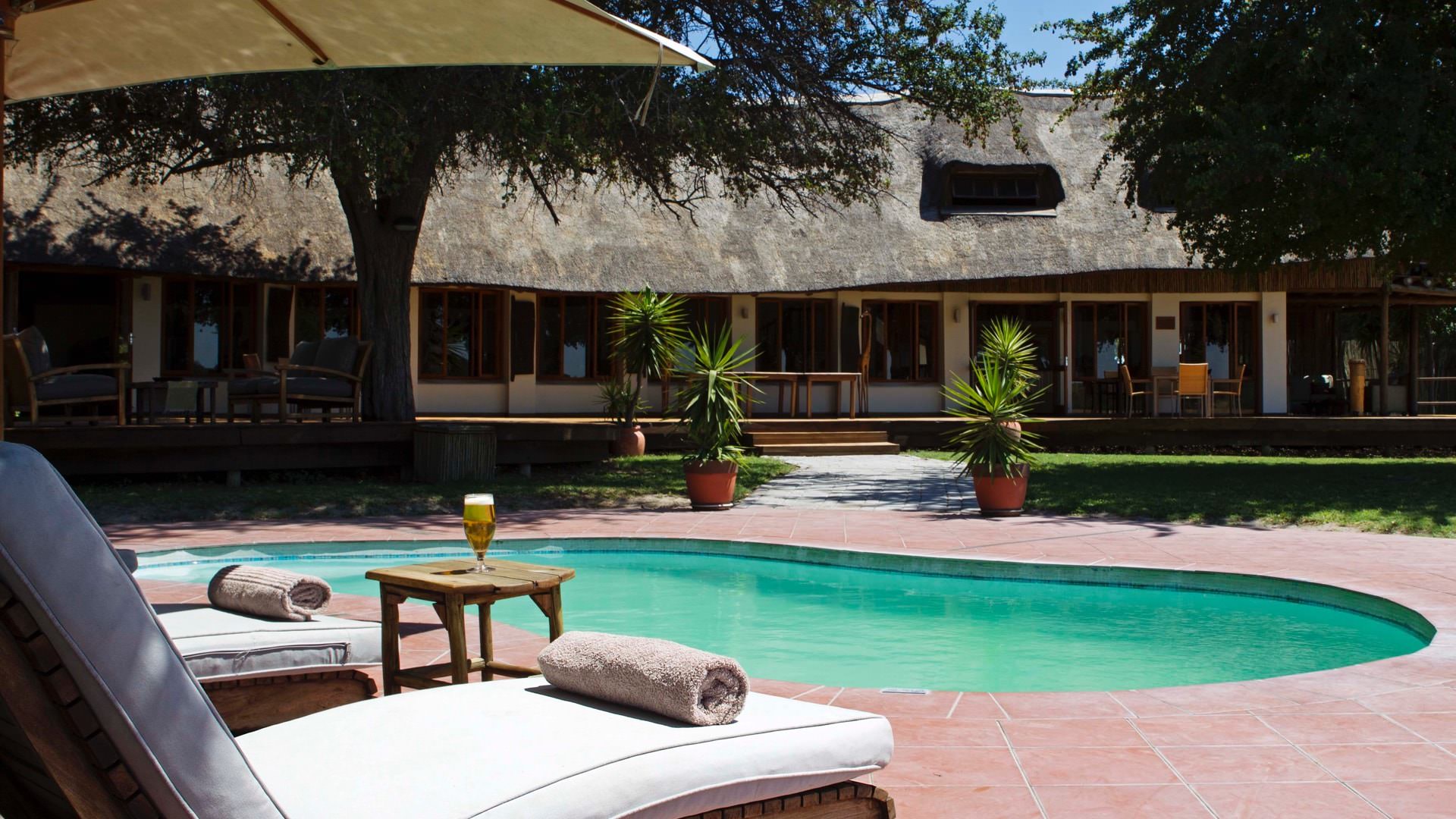
Expert Africa's gallery
When we travel we take lots of photos ourselves to give you a real and un-edited view of the safaris. See our 1 pictures of Kavinga Safari Camp to get the candid view.
View galleryKavinga Safari Camp: Our full report
Kavinga Safari Camp is one of the few properties in Zimbabwe’s Mana Pools National Park not based on the ...
... banks of the Zambezi River. Instead it lies atop a hill in a private reserve on the southern boundary of the park, a full 42km from the river. Overlooking the ephemeral Ruckomechi River, Kavinga has scenic views of the Zambezi escarpment, surrounding bush and the camp’s showpiece, its waterhole.
During the dry season (April to November) water in the Mana Pools area becomes scarce, drawing much of the wildlife towards the permanent Zambezi River. Most camps in the park are set up along the river to take advantage of this, but the owners of Kavinga Safari Camp and a few others have taken a bold alternative approach. Water might be limited in Kavinga’s remote southern section of the park, but the camp pumps a waterhole here and this, along with a scattering of natural springs on the concession, draws wildlife from miles around.
Kavinga has seven safari tents each built on a platform a couple of metres high on the edge of a cliff, looking down on the ephemeral Ruckomechi river below. This unusual construction gives a particularly good easterly vantage point over the bush, towards the camp’s waterhole and across the riverbed. As a result, guests can often spot wildlife from the chairs on their veranda or enjoy a cup of tea/coffee in the morning and – as we did on our first visit in October 2018 – watch the sunrise from bed through the large glass and gauze doors.
These sliding doors and big gauze windows allow plenty of air to circulate and add to the light and airy feel of these modern, comfortable but unfussy tents. However, if you want additional privacy or to isolate yourself from the sounds of the bush a little then there are roll-up canvas flaps that Velcro into place.
Each tent is kitted out with twin beds with bedside tables and reading lamps, all curtained beneath a mosquito net. A small chair and table with tea and coffee complete the main bedroom. To the back of the tent is the en-suite bathroom with shower, his and hers basins, large luggage rack with a safe and a separate toilet cubicle.
From the tents, winding paths lead to the main area (yes the one made famous by that hyena kill), an open-fronted two-storey structure designed to make the most of the views. On the ground floor you’ll find an open-plan lounge cum library and dining area complete with long table where guests, managers and guides eat together. Behind is a small curio shop with locally made souvenirs, and a bar where guests are encouraged to help themselves if they are unable to find one of the ever-helpful staff or managers.
From the bar a staircase leads up to the top-floor viewing deck. This space seemed seldom used on our last visit but would undoubtedly make a nice spot to relax and enjoy a book or drink. Outside, a small plunge pool is good for cooling off by day and a firepit draws guests to relax and reminisce in the evening.
More winding paths lead down to Kavinga’s water-level hide, which it offers an excellent opportunity for photographers and birders to get close to the waterhole action. There isn’t anything quite like this elsewhere in the park and we certainly felt that this was a big plus.
Other than the hide, activities here focus on 4WD or walking safaris accompanied by one of Kavinga’s fully qualified professional guides. We were pleasantly surprised by the number of animals we saw on the reserve, both in camp and out on activities. By staying close to the dry riverbed we were able to see further and visit the various water points which attract wildlife. A particular highlight was watching a pride of lion, including some very young cubs, on a fresh buffalo kill.
For birders, Kavinga has a lot to offer, not only the usual suspects but also migratory species. We were entranced by the vivid and ever-active carmine bee-eater colonies that were nesting in the banks of the dry Ruckomechi River, meaning we could get some excellent up-close photographs. In addition, the camp is open longer than most properties in the park (1 April– 10 December), giving guests the opportunity to experience the park into the beginning of the rainy season when migrant birds are more numerous. Do note, though, that outside of the usual safari season (approx mid-April to mid-November), larger wildlife can be pretty scarce.
Activities
4WD Safari
Birdwatching
Guided walking safari
Night drive
Private activities
Families & children
- Attitude towards children
- Kavinga is fairly welcoming to children, with flexible activities and mealtimes.
- Property’s age restrictions
- No children under 13 in high season (Jun–Oct). Children under 13 are not allowed on walking activities at any time of year.
- Special activities & services
- None
- Equipment
- None
- Generally recommended for children
- The camp’s design isn’t particularly well suited to families with young children and despite the pool, hide and flexible activities we don’t think there is enough to do to entertain younger children. In addition,without a fence this isn’t somewhere you can let children run free.
- Notes
- Being close to the cliff edge and with steep steps up to the tents, younger children would need constant supervision here.
Food & drink
- Usual board basis
- Full Board & Activities
- Food quality
- On our visit in October 2018 we enjoyed the communal eating and the tasty food supplied by the lodge. We understand that most dietary requirements can be catered for if the camp is advised in advance.
We were treated to a bush breakfast during our stay. Part way through the morning we found shelter under a tree and enjoyed bacon and egg sandwiches with yoghurt, granola bars and a selection of teas and coffees in the company of a very full-looking pride of lions who were lounging a safe distance away. Although we didn’t experience it, we understand that a more standard buffet is offered back at camp.
Lunch was a ham, butternut and feta quiche served with carrot and green salads and delicious fresh-baked bread.
For our three-course dinner, we started with chilled tomato soup, followed by an excellent beef curry and rice. Dessert was a light and refreshing lemon cheesecake. - Dining style
- Group Meals
- Dining locations
- Indoor Dining
- Further dining info, including room service
- Bush dinners and private dining can be arranged on request.
- Drinks included
- Soft drinks, local beers and wines are included in your stay.
Our travellers’ wildlife sightings from Kavinga Safari Camp
Since mid-2018, many of our travellers who stayed at Kavinga Safari Camp have kindly recorded their wildlife sightings and shared them with us. The results are below. Click an animal to see more, and here to see more on our methodology.

100% success

100% success

100% success

100% success

100% success

100% success

0% success

0% success

0% success

0% success

0% success

0% success

0% success

0% success

0% success
Getting there
- Location
- Mana Pools National Park, Zimbabwe
- Ideal length of stay
- Three nights is ideal at Kavinga, giving time to relax at the camp, enjoy the hide and explore a lesser-visited side of the park.
- Directions
- Guests will generally fly to a nearby airstrip before being transferred to camp by 4WD. Alternatively, for those coming from elsewhere in the park, a road transfer might be arranged, depending on the distance.
- Accessible by
- Fly-and-Transfer
Special interests
- Birdwatching safaris
- Zimbabwe’s Mana Pools National Park is a superb spot for birdwatching. While Kavinga isn’t located on the main Zambezi River, the area’s varied habitat, combined with an eye-level hide and a longer season than most of Mana’s camps, makes it an interesting option for birders.
- See ideas for Birdwatching safaris in Zimbabwe
- Photography safaris
- An eye-level hide is the perfect way to capture a unique perspective on animals and birds without altering their behaviour. Kavinga, the only camp in Mana with such a hide, is a fantastic option for keen photographers visiting Zimbabwe.
- See ideas for Photography safaris in Zimbabwe
Communications
- Power supply notes
- There is a back-up generator.
- Communications
- There is WiFi in the main area as well as patchy cell service around the lodge.
- TV & radio
- None
- Water supply
- Borehole
- Water supply notes
- Hot water is supplied to the tents by a solar geyser. Each tent has a flush toilet.
Health & safety
- Malarial protection recommended
- Yes
- Medical care
- The nearest doctor is in Kariba, a few hours’ drive away. The nearest airstrip is 10 minutes’ drive from Kavinga, which makes an emergency evacuation much quicker. The management and guides are first aid trained,
- Dangerous animals
- High Risk
- Security measures
- There are no guards here but the managers and guides all sleep on site.
- Fire safety
- There are fire extinguishers outside each tent and dotted around camp
Useful info
- Disabled access
- On Request
- Laundry facilities
- Included, although smalls should be washed with the detergent provided in the rooms.
- Money
- The camp doesn’t offer currency exchange. There is a small electronic safe in each tent.
- Accepted payment on location
- There is little need to spend money here but any curios or other purchases can be settled in US dollars cash only.
Plan and book your trip with Expert Africa
All of our trips are tailor-made, so we'll always adapt them to suit you. Talk to an Expert and let us plan and arrange your perfect trip.

Talk to an Expert
Call or email us now! We’ll match you with the Specialist in our team who is best suited to help you. Then together we can start planning your trip.

Set up your itinerary
Based on our experience and your ideas, your specialist will create a detailed, costed itinerary. We’ll refine it together, until we have a trip that you’re perfectly happy with.

Prepare for your trip
The same Specialist will make the seamless arrangements for your trip, send you detailed travel documents, and be available to answer any questions before you depart.

Travel with peace of mind
After you set off, you’ll be cared for by our partners in Africa, most of whom have worked with Expert Africa for decades. And if you ever need us urgently, we’re available 24/7.

When you return
We love to learn about your trip, and so will always be grateful if you’ve the time to give feedback to your Specialist when you return.
Kavinga Safari Camp's location
Look closer at the environment and surroundings of Kavinga Safari Camp.
Other lodges in Mana Pools National Park
Alternative places to stay in this same area.
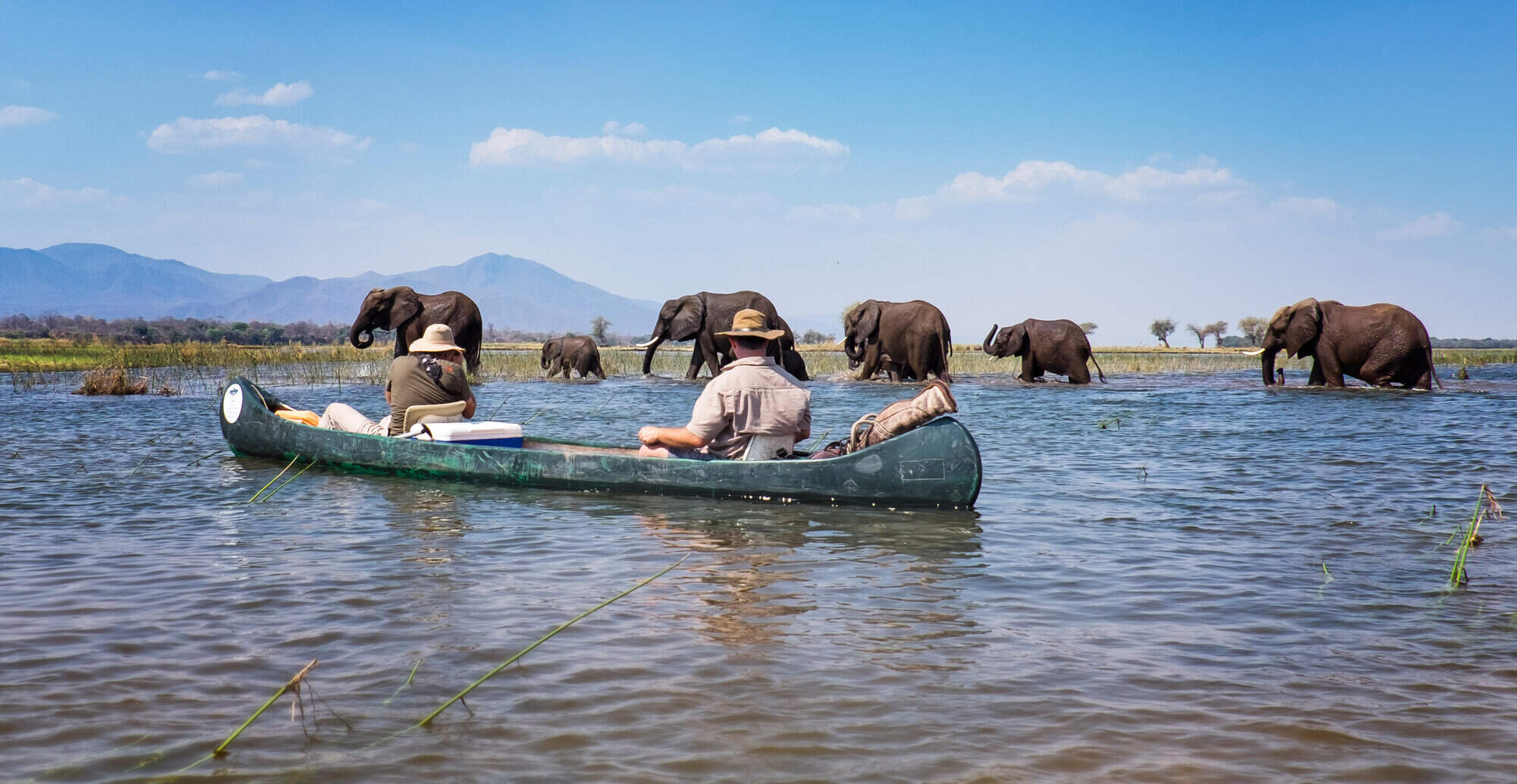
Vundu Camp
Overlooking the Zambezi River in Mana Pools National Park, Vundu Camp is a small, comfortable bushcamp offering top-notch guiding.
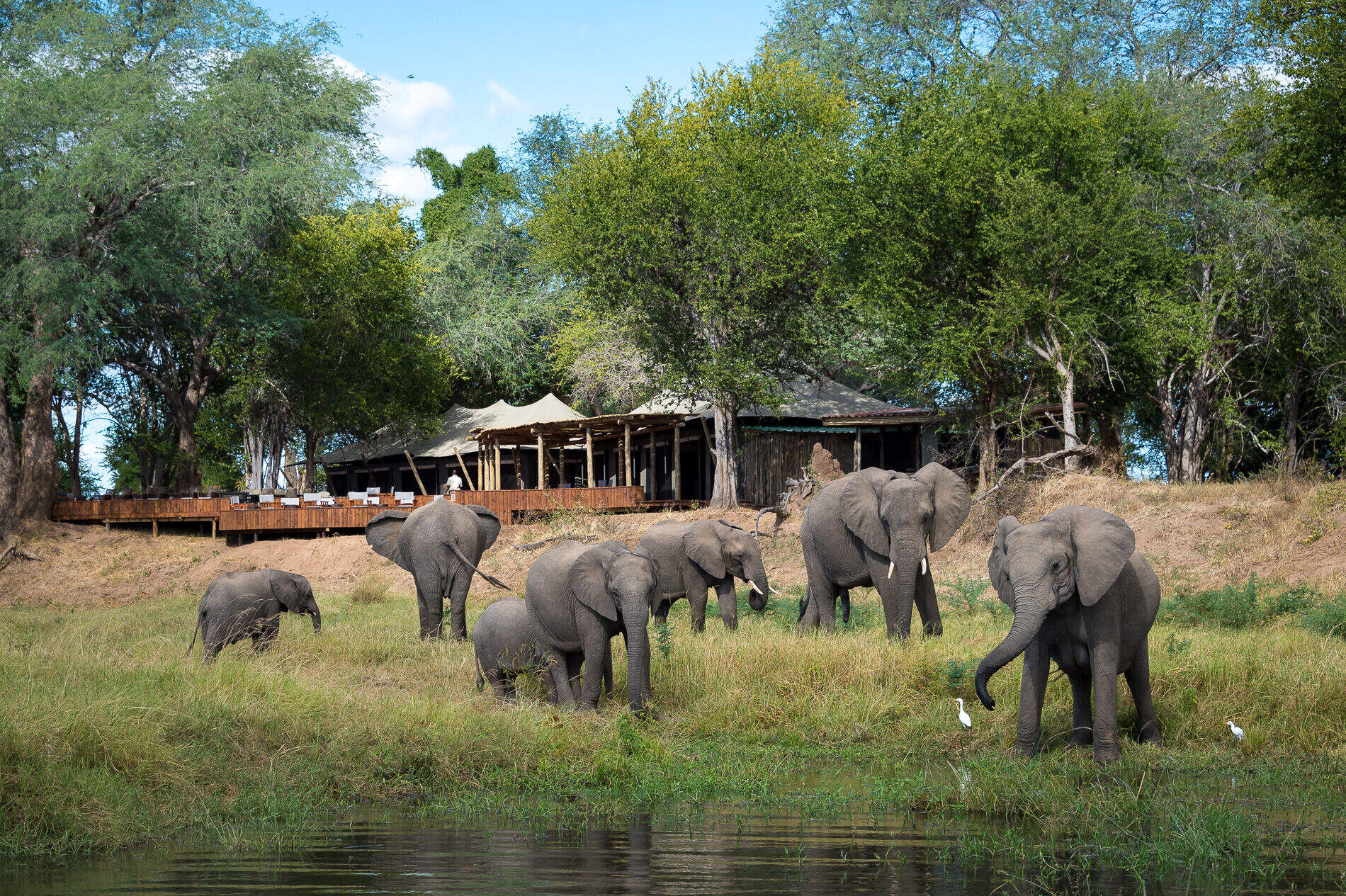
Ruckomechi Camp
In a very scenic spot beside the Zambezi, Ruckomechi is a smart camp offering excellent walking, river safaris, night and day 4WD game drives.
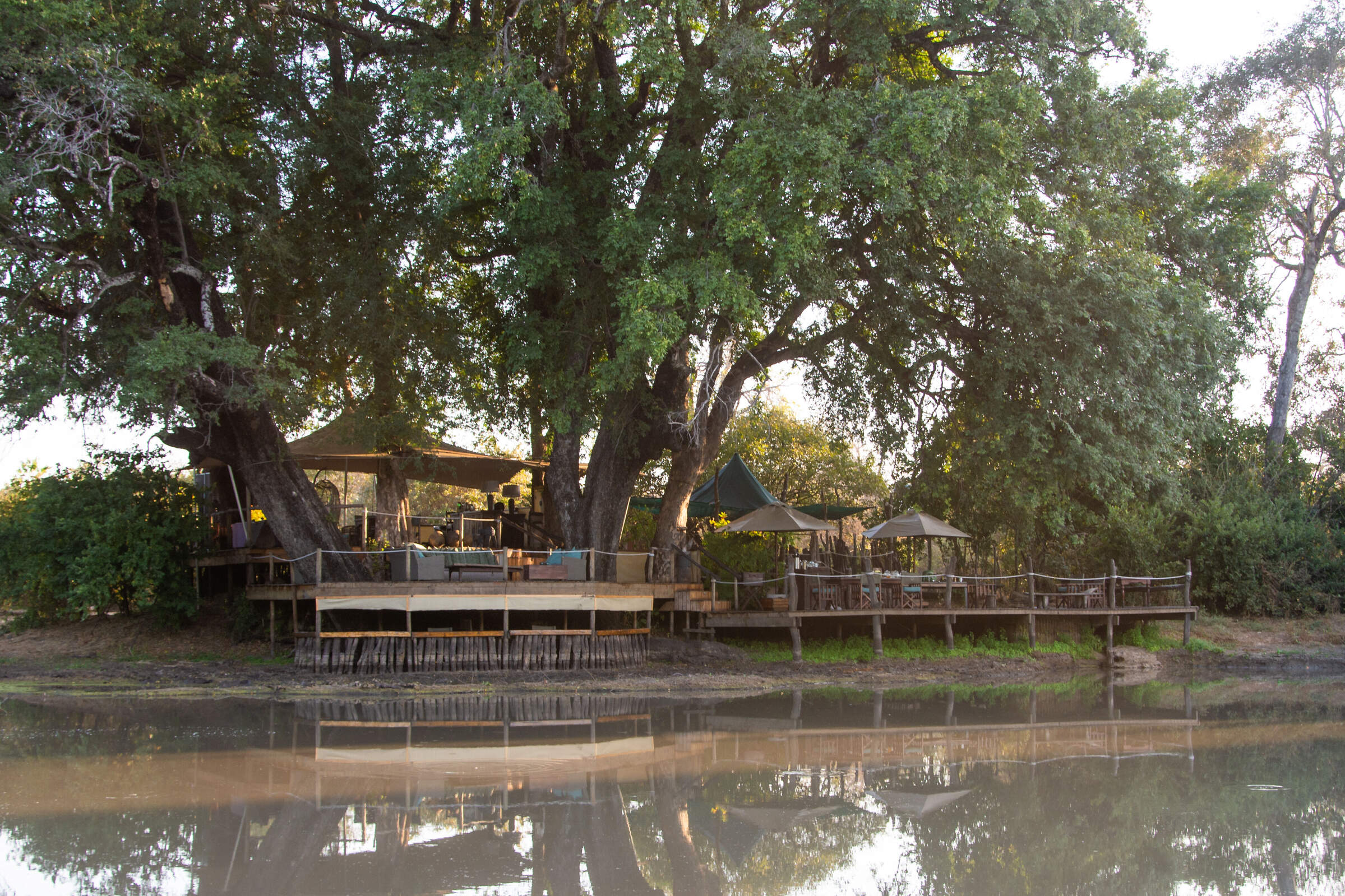
Kanga Bush Camp
Unspoiled and peaceful, Kanga Bush Camp is located in a remote and exclusive part of Mana Pools National Park, overlooking the Kanga Pan.
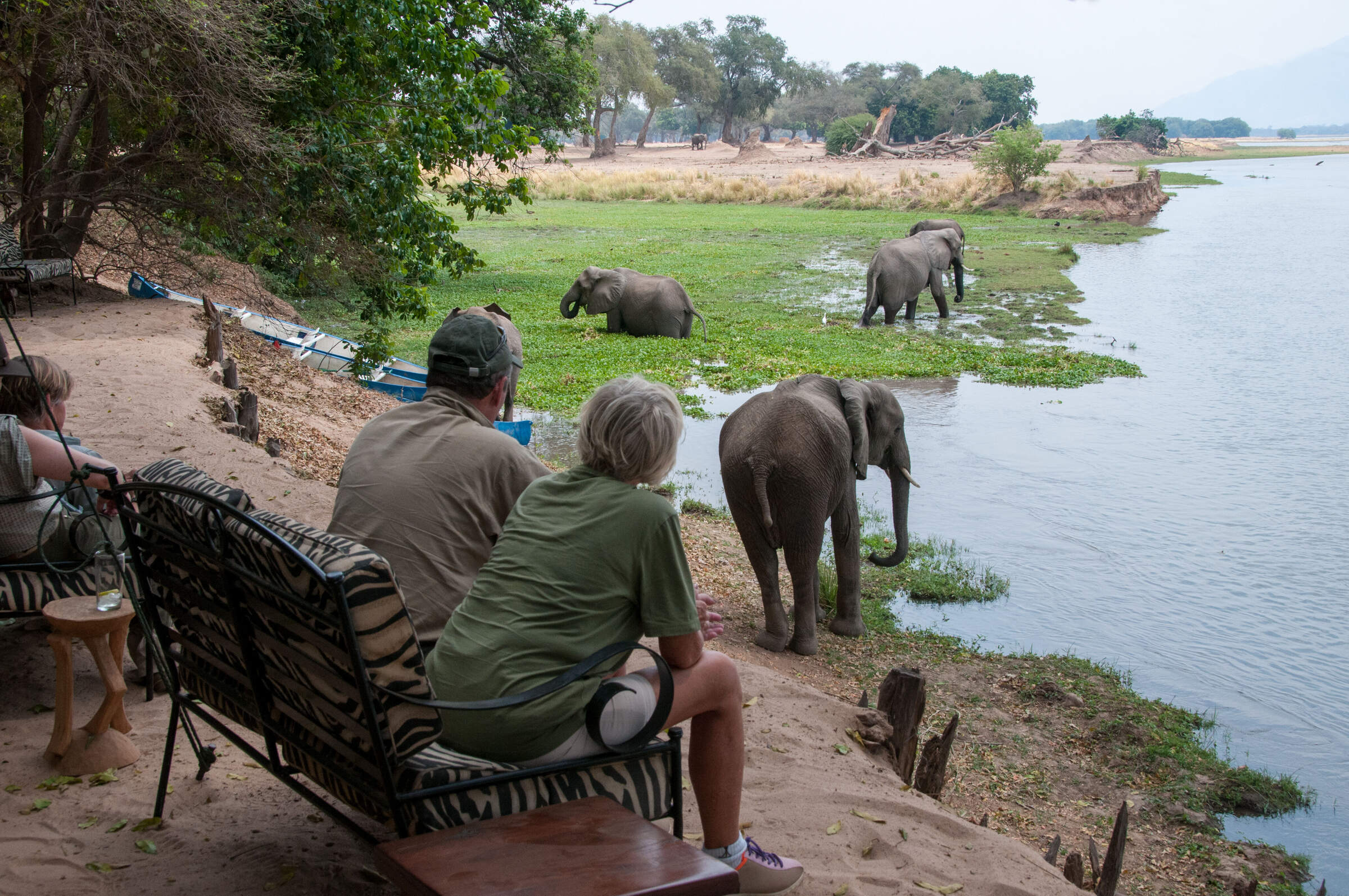
Stretch Ferreira Safaris
Stretch Ferreira Safaris Camp is a small, owner-run camp on the banks of the Zambezi River in Mana Pools National Park, with the emphasis on great guiding.
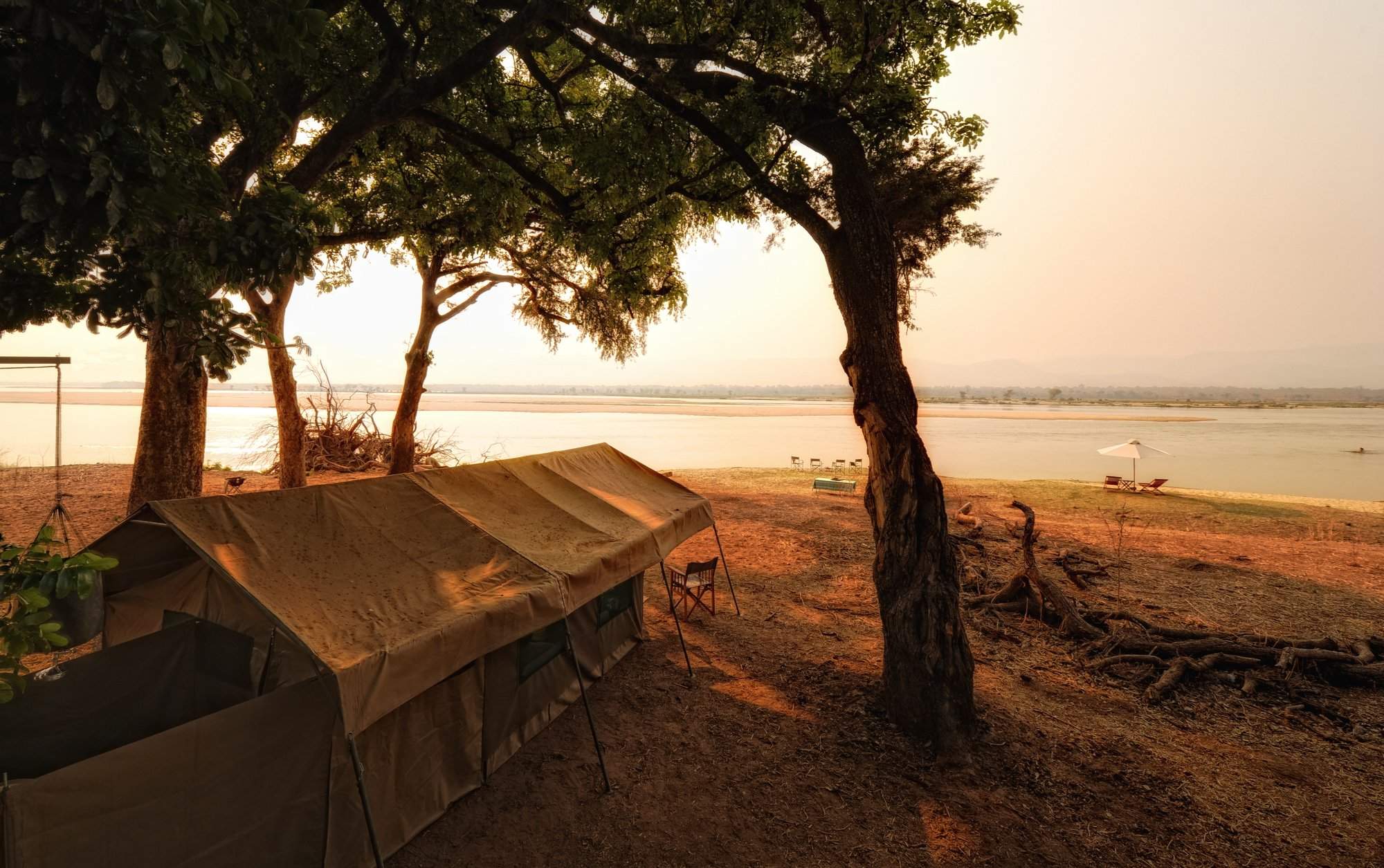
Zambezi Expeditions
Zambezi Expeditions is a simple, semi-permanent camp along the Zambezi River that offers excellent guiding and standards of service.
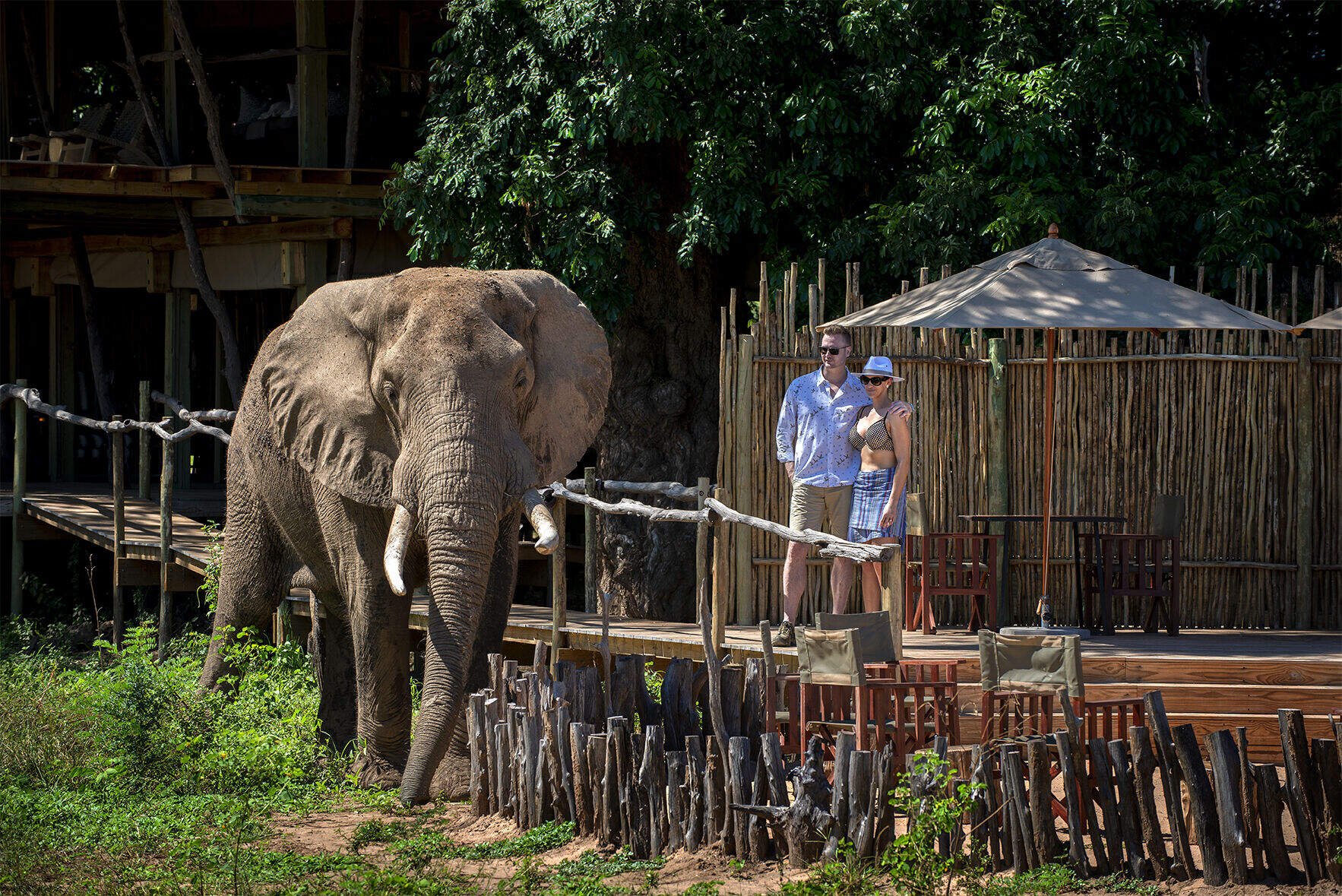
Nyamatusi Camp
Overlooking the Zambezi River, the luxury Nyamatusi Camp occupies a pristine wilderness environment.
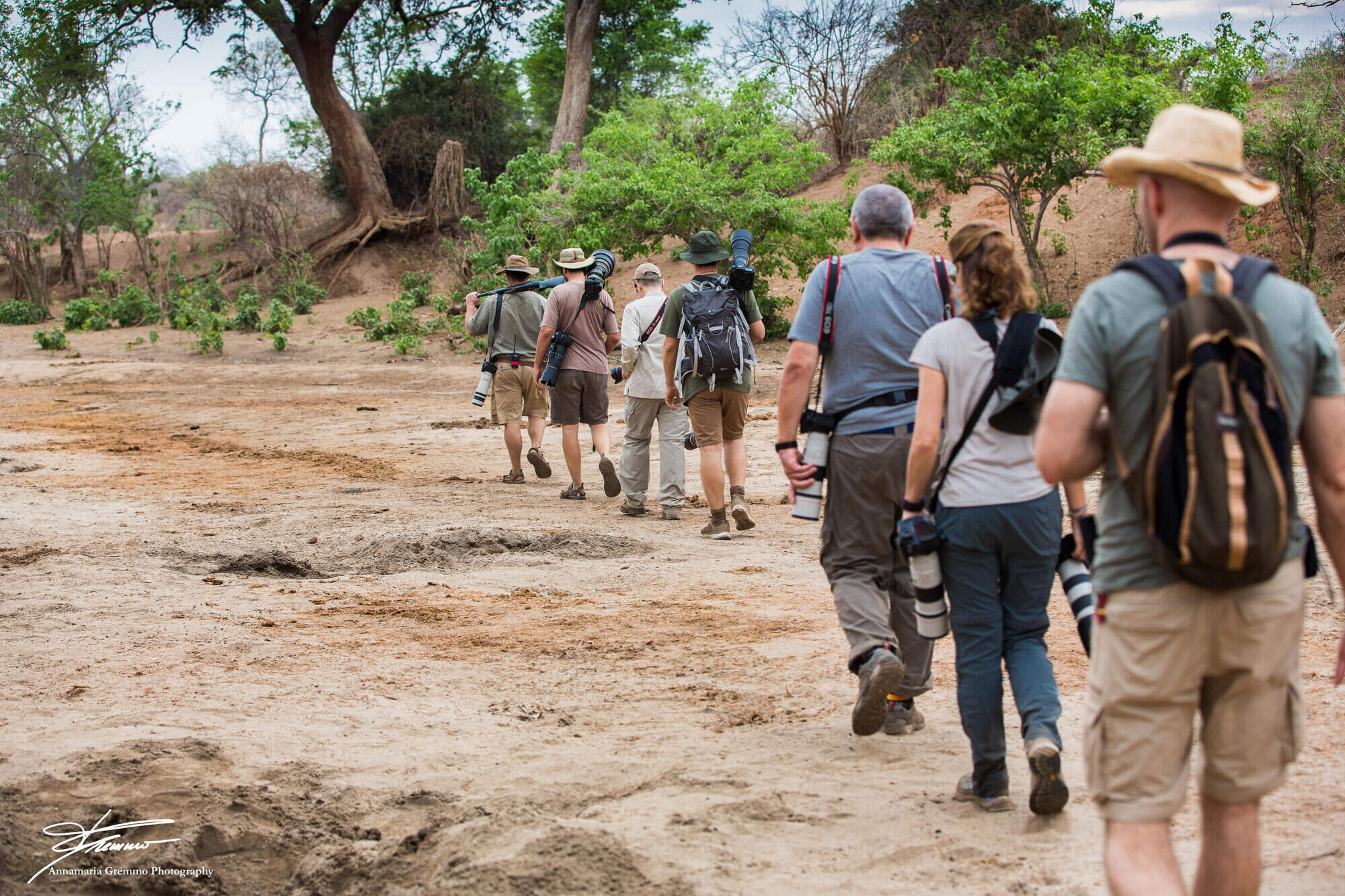
Little Vundu
Closely associated with Vundu Camp, Little Vundu has the same great location and quality of guides, and is occasionally used for private group bookings.
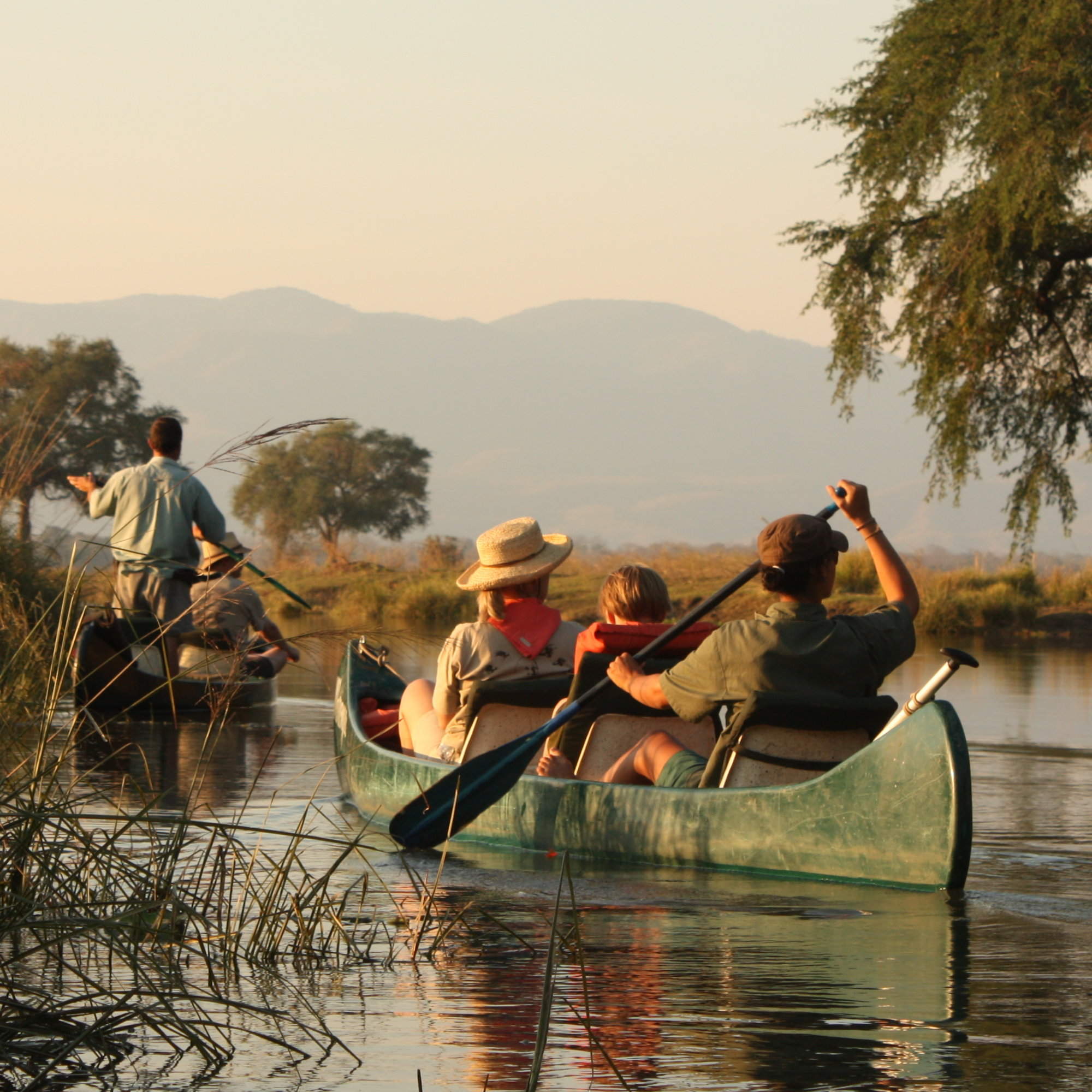
Mana Canoe Trail
The Canoe Trail is a multi-day trip, along the Zambezi with some of the best guides in Africa. Each night you'll camp on the banks of the river.
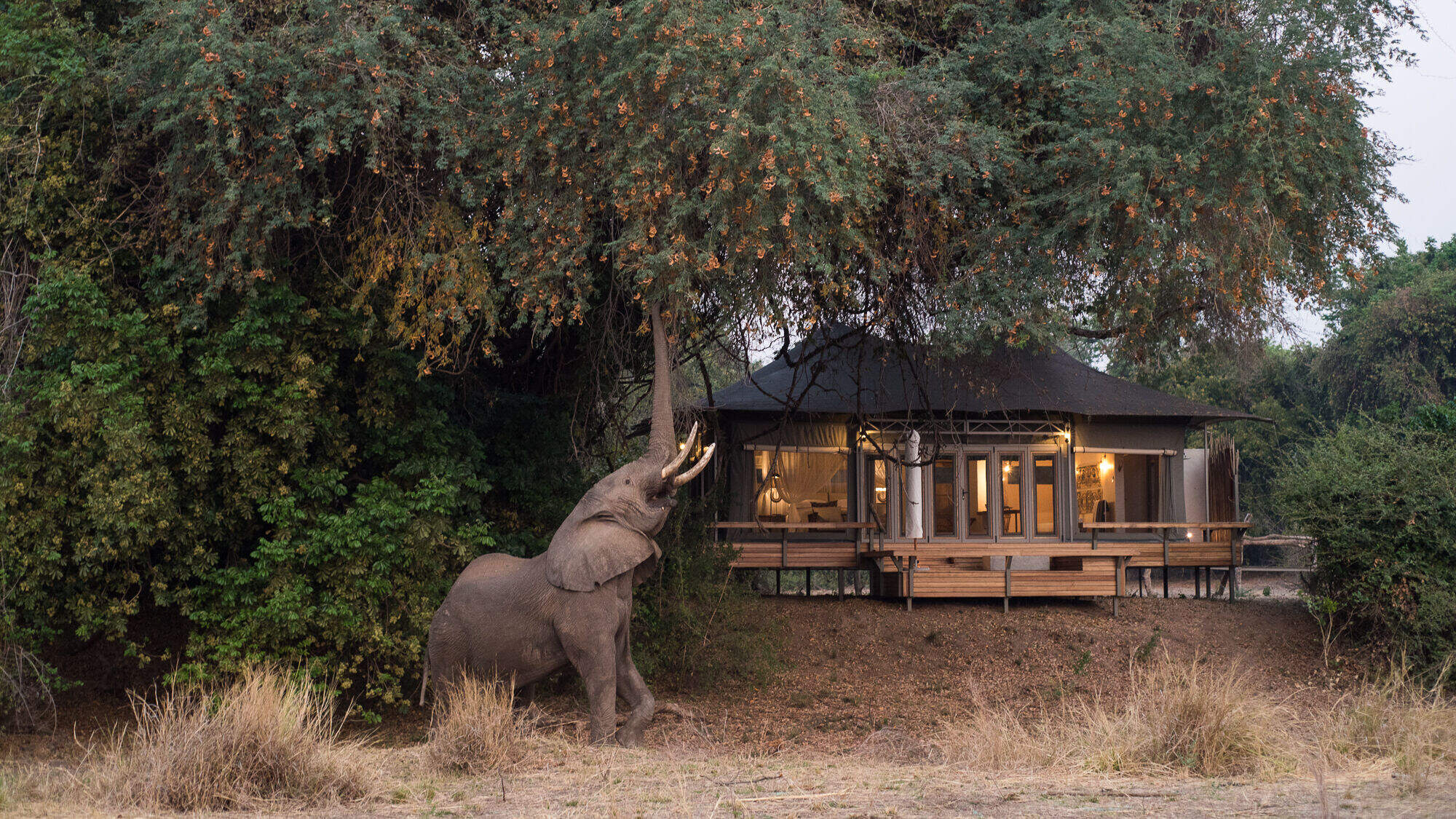
Chikwenya Camp
One of the original properties in Mana Pools area we are excited to be featuring Chikwenya Camp again.
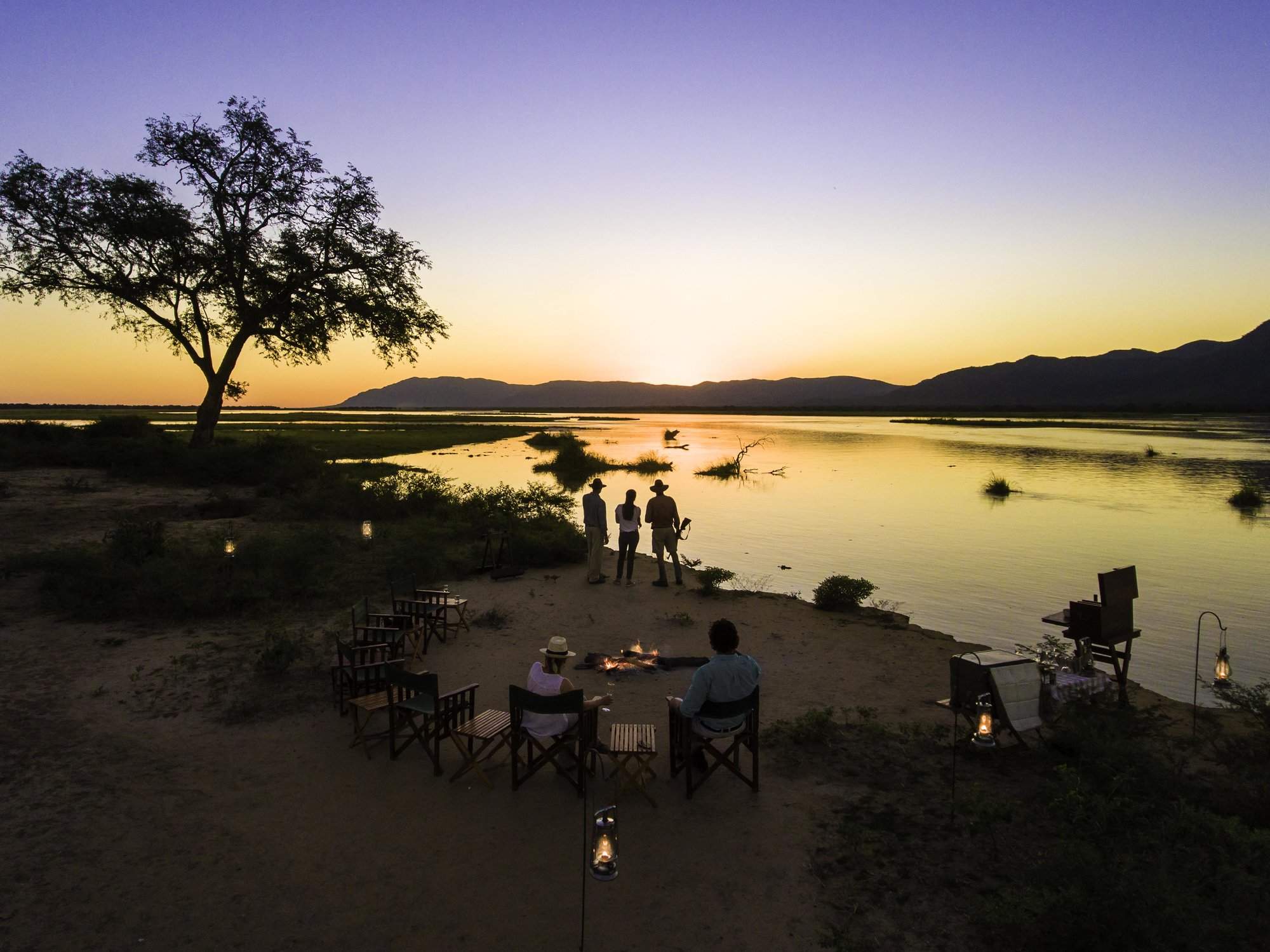
John's Camp
John's Camp is a semi-mobile tented camp offering walking safaris, game drives, and fishing in Zimbabwe's Mana Pools National Park.
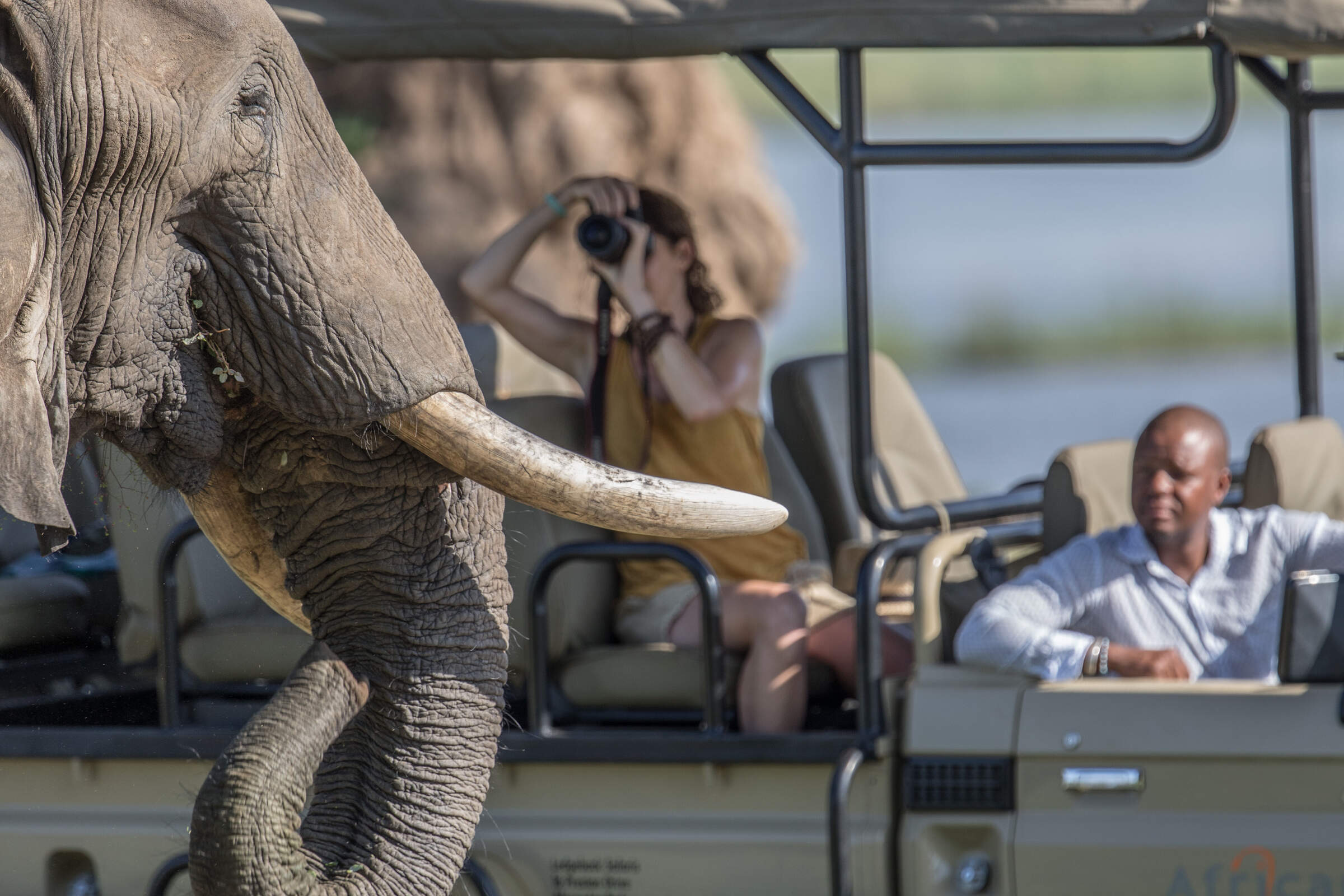
Nyamatusi Mahogany
Nyamatusi Mahogany is a family-friendly, yet remote and luxurious safari camp in Mana Pools National Park.
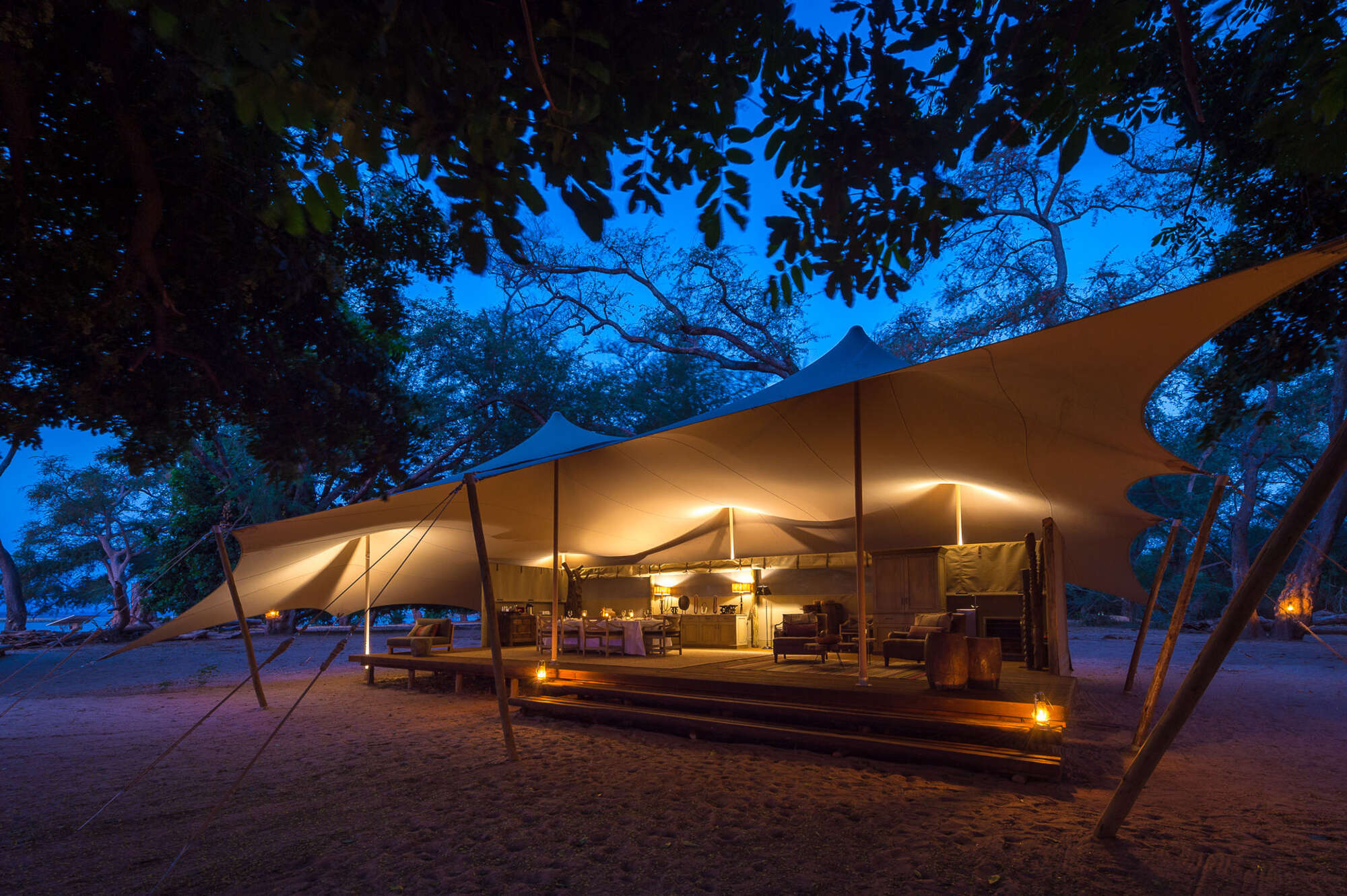
Little Ruckomechi
In a shady spot beside the Zambezi, Little Ruckomechi is a small but luxurious camp offering a reange of activities including walking and canoe trips.
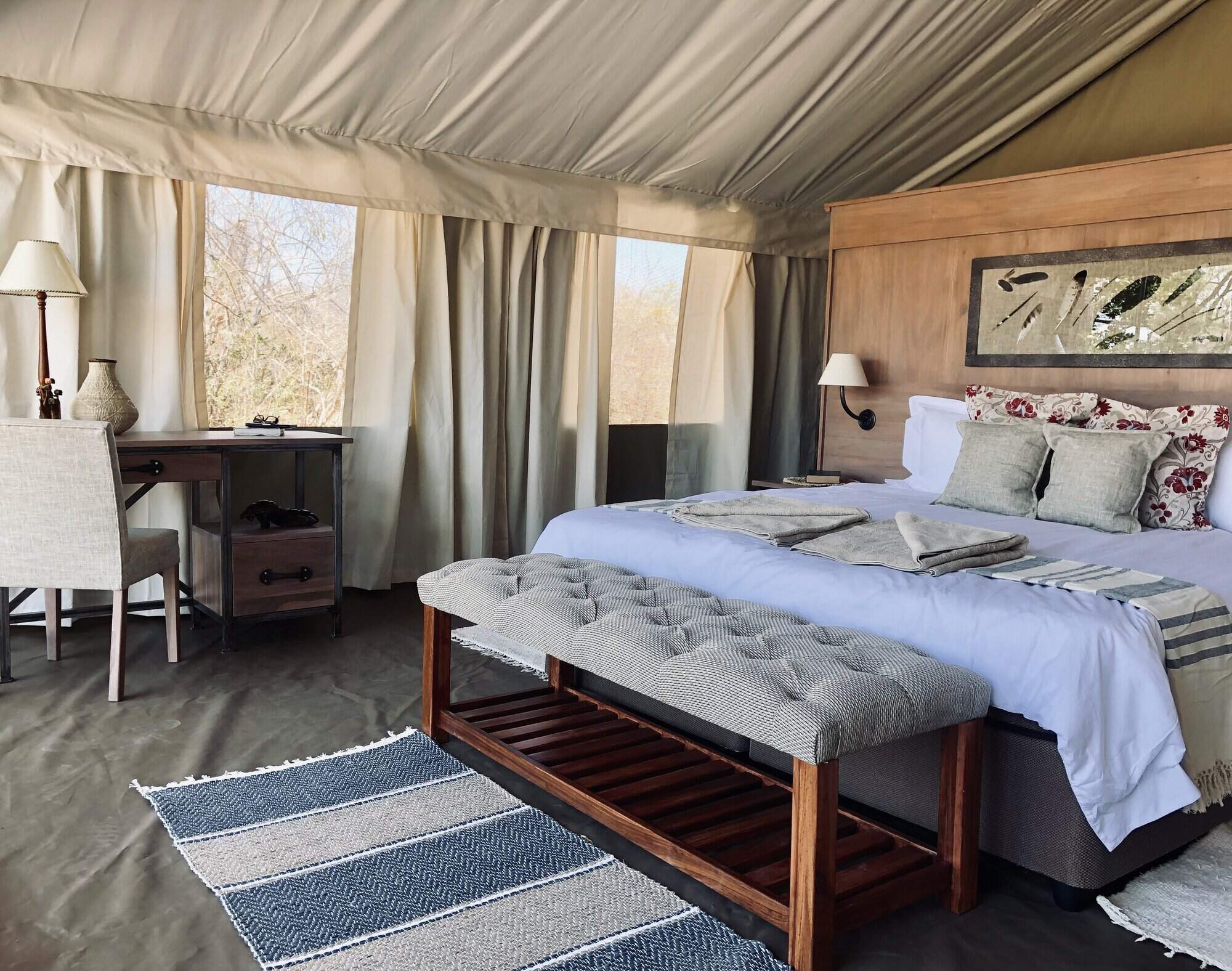
Ingwe Pan Camp
Ingwe Pan Camp is due to open in May and will be located in a remote area in the north of the Mana Pools National Park
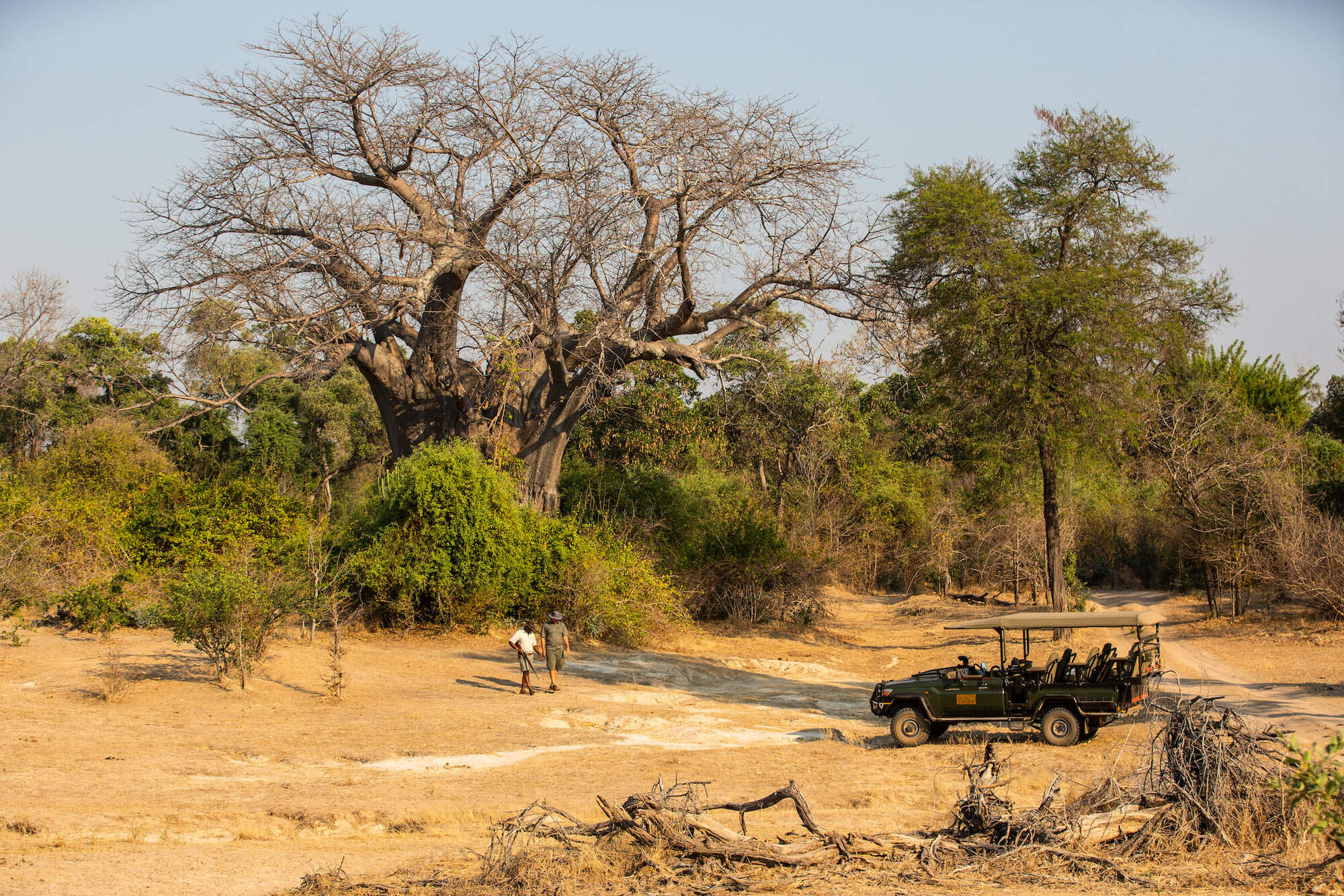
Tembo Plains Camp
Building commenced on Tembo Plains Camp in February 2021. Details are sparce at this stage but we'll update this page once we know more.
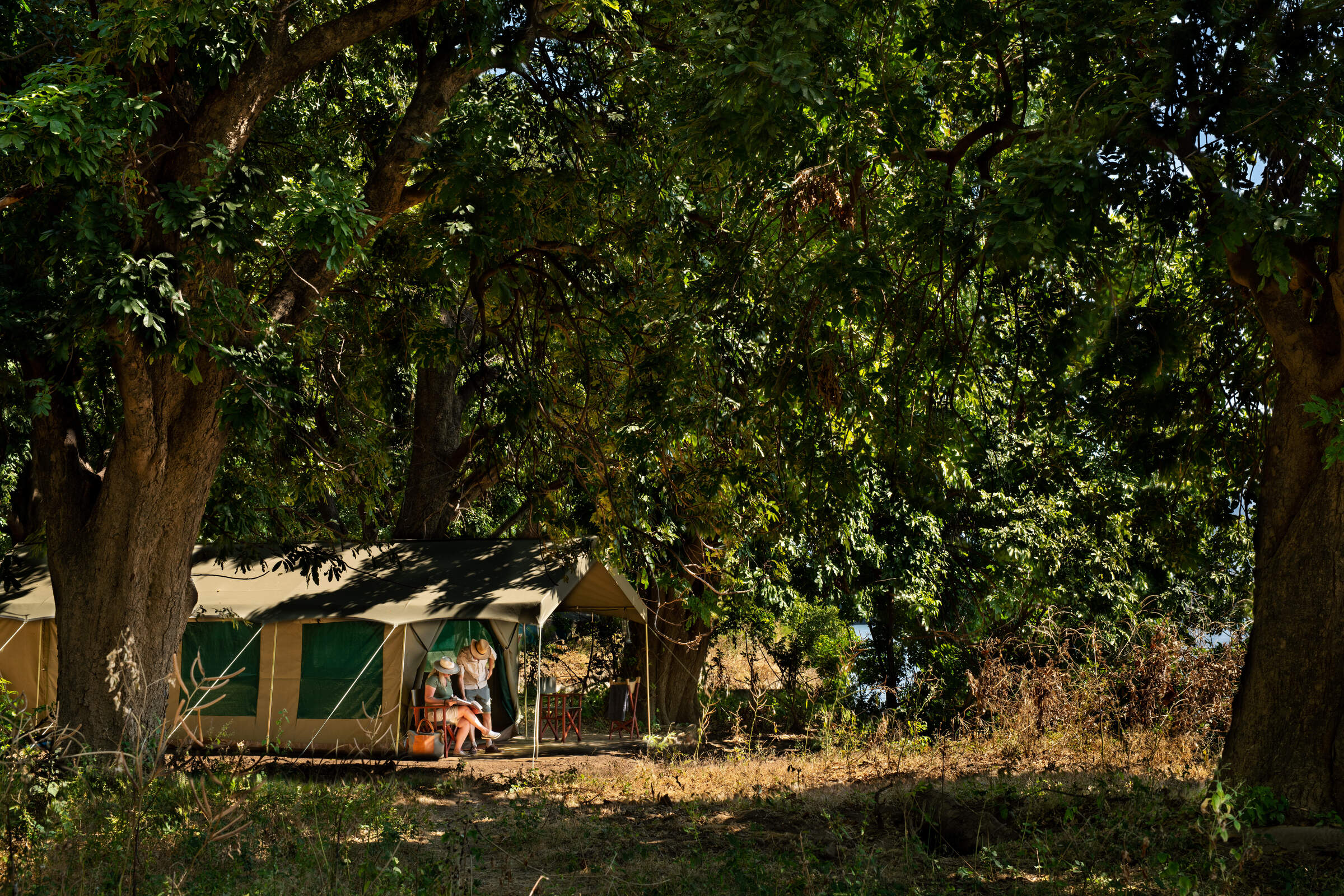
Mana River Camp
Mana River Camp sits on the banks of the Zambezi River, a site formerly occupied by Mwinilunga Camp.
When to go to Mana Pools National Park
Our month by month guide: What it's like to visit Kavinga Safari Camp in Mana Pools National Park
Jan
Feb
Mar
Apr
May
Jun
Jul
Aug
Sep
Oct
Nov
Dec
Zimbabwe in January
January falls in the middle of Zimbabwe’s rainy season and is the wettest month of the year. Heavy rainfall occurs most days, flooding seasonal rivers and waterholes, with the occasional sunny spell.
With the high levels of precipitation the wildlife in the national parks becomes widely dispersed, taking advantage of the abundance of food and water, and is easily hidden by the thick, green bush.
While sightings of larger animals are possible, and many species drop their young at this time, game viewing is often sparse. However, many migratory species of bird arrive in Zimbabwe making it a peak month for birding.
The rains create incredibly sticky mud in Mana Pools National Park, preventing access and causing camps to close for the season. The majority of the camps in other parks remain open, with low rates attracting a smattering of visitors.
- Peak of the rainy season: hot & humid with heavy rain most days
- Bush exceptionally thick and green, with poor game viewing
- Species such as impala drop their young
- All camps in Mana Pools closed
- Very few visitors, and low rates at open camps
Our view
A time to avoid if possible
Weather in January
Zimbabwe in February
February remains well within Zimbabwe’s rainy season. Although total rainfall drops, relatively short thunderstorms can still be expected most afternoons. On the plus side, there is a greater chance of some sunshine in-between.
Much of the country remains waterlogged, closing access to Mana Pools and severely restricting walking safaris in other parks. While game drives and canoeing remain an option, the abundance of water disperses animals, and thick grass can make it difficult to spot larger species, but birding remains excellent. Conversely, this is a great time of year to view the landscape, and is excellent for photographers. Sporadic cloud cover and clear air can make for some spectacular sunsets too, particularly over Lake Kariba and the Zambezi River where the reflections off the water add to the beauty.
- Generally wet with frequent thunderstorms & hot humid days
- Poor wildlife viewing due to dispersed animals & thick bush
- Clear air, green landscapes & exceptional sunsets
- All camps in Mana Pools closed
- Very few visitors & low rates at camps that are open
Our view
This is not a great time to visit
Weather in February
Zimbabwe in March
March is the final month of Zimbabwe’s rainy season, when the rains start to trail off and sunny days become the norm. However, some days the clouds can still build, breaking into thunderstorms in the afternoon.
Mana Pools remains closed throughout the month but the majority of camps in Hwange, Matusadona and Gonarezhou remain open. Here, the landscape is green and alive, with migrant species of birds taking advantage of the abundant insect life. Larger animals remain elusive though, and walking safaris remain restricted.
By this time of year, the rains have normally trickled down to the Zambezi River and the flow of water over the Victoria Falls starts to increase, but without kicking up too much spray to obscure the views.
- Last month of the rainy season: hot, humid days with occasional storms
- Lush vegetation means good birding, but poor game viewing
- Views of the Victoria Falls improve
- All camps in Mana Pools closed
- Open camps have few visitors & low rates
Our view
This is not a great time to visit
Weather in March
Zimbabwe in April
April marks the end of Zimbabwe’s rainy season and the end of summer. Clear skies are the norm, with just the occasional shower. Temperatures start to drop, failing to reach 30ºC most days and dropping down to around 10ºC at night.
As the rain fades the landscape starts to dry out. While the vegetation remains thick and green, the soil in Mana Pools dries enough for camps to open, and the only camps to remain closed are the most remote bushcamps in Hwange. Although viewing of larger animals remains tricky, the improved weather starts to draw back visitors, as do prices significantly below those in the peak season.
The Zambezi River and flow of water over the Victoria Falls is at its highest, although large amounts of spray diminish views of the waterfall itself.
- Transitional period, with much lower rainfall & falling temperatures
- Wildlife is still dispersed & hard to see, but sightings improving
- Views of the Victoria Falls often obscured by spray
- Camps in Mana Pools open
- Visitors start to return & camps increase their rates
Our view
A good time to visit, with pros & cons
Weather in April
Zimbabwe in May
The first month in the dry season, May is also Zimbabwe’s first month of winter. If the rains are particularly late in a given year, you may catch the odd shower, but you can expect clear and sunny days the majority of the time. While it’s warm in the daytime, temperatures drop to single digits at night, so bring a warm jumper and gloves for early morning drives.
With the rain having cleared the air, the sky is bright blue, and it’s the best time of year for photography.
Even the most remote camps in Zimbabwe are now open. With the lack of rainfall, vegetation dies back significantly, and seasonal rivers return to sand. Not only does this open up the possibility of walking safaris, but wildlife viewing becomes much more reliable.
- Start of the dry season, with milder days and cold nights
- Game viewing significantly improves as vegetation dies back
- Vegetation starts to turn from green to brown
- Best time for photography with crystal clear air
- Visitors start to return; all camps open & rates increasing
Our view
A very good time to visit
Weather in May
Zimbabwe in June
During June you can virtually be guaranteed of dry and sunny days, although temperatures continue to drop, and can get close to freezing at night in Hwange National Park. Jumpers, jackets and gloves are strongly recommended for early mornings and evenings.
The opportunities for wildlife viewing improve throughout the month as the landscape rapidly dries, and the animals start to gather on the banks of the Zambezi River and around Hwange’s waterholes.
Water levels in the Zambezi River start to drop, reducing the amount of spray kicked up at the Victoria Falls and greatly improving visibility, but still allowing a full curtain of water to cascade over the edge.
- Middle of winter, with night-time temperatures close to freezing
- Game viewing significantly improves throughout the month
- Views of the Victoria Falls are at their best
- Noticeable increase in visitor numbers
- Camps considerably more expensive
Our view
A very good time to visit
Weather in June
Zimbabwe in July
July sits in the middle of Zimbabwe’s dry season. Although it’s warm at midday, temperatures are generally cold and in Hwange it’s been known to drop below freezing at night, with the lower-altitude Mana Pools feeling a bit warmer.
With wildlife clustering around the few remaining waterholes, sparse vegetation, and some of the best views of the Victoria Falls, this is one of the most popular times to travel, with camps charging peak season rates to reflect this. That said, visitor numbers to the country in general remain low, and outside of the Victoria Falls it’s rare for any areas to feel crowded.
- Middle of the dry season with almost no chance of rain
- Clear sunny days, but very cold nights
- Wildlife viewing good; game drives and walking safaris unrestricted
- Views of the Victoria Falls at their best
- Camps charging peak season rates
Our view
A very good time to visit
Weather in July
Zimbabwe in August
While August is the end of winter and temperatures are starting to creep up, mornings and nights are still cold, and game drives in open vehicles can feel particularly chilly. Well into the dry season, the landscapes will have mostly transformed from green to brown and wildlife viewing in Zimbabwe’s national parks is approaching its best. Due to dust kicked up into the atmosphere and smoke from bush fires you may start to notice a haze on the horizon, but this doesn’t significantly impact photography.
August is one of the most expensive months, and the pleasant weather and decent game viewing attracts lots of visitors. While the national parks rarely feel crowded, Victoria Falls accommodation can sell out a year in advance.
- Warm, sunny days but cold mornings & nights; almost no chance of rain
- Wildlife viewing nearly at its best
- Landscape turns brown, & an atmospheric haze develops
- All camps charging peak season rates
Our view
Fantastic: the very best time to visit
Weather in August
Zimbabwe in September
Temperatures in September rarely drop below 15ºC, but are yet to reach the oppressive highs of summer. It will normally have been five months since the last drop of rain, so antelope and elephants cluster around whatever water remains, with predators never too far away.
The landscape is very brown, and the haze building on the horizon takes some of the colour out of the sky, so while animal subjects are plentiful, the background is not ideal for photography.
The combination of incredible wildlife viewing, hot and sunny weather, and cheaper flights outside of the school holidays make this the most popular time of year to travel, and availability at the camps can become limited up to a year in advance.
- The best month for weather, with a pleasantly warm temperature range
- One of the best months for game viewing
- Victoria Falls starting to dry but still impressive on Zimbabwean side
- All camps are charging peak season rates
- Most popular time to travel, & space can be limited
Our view
Fantastic: the very best time to visit
Weather in September
Zimbabwe in October
October is the last month of the dry season with little chance of rain but building humidity. While the higher elevation of Hwange National Park limits temperatures to the 30s Celsius, they can easily top 40ºC in Mana Pools.
With little vegetation or water, wildlife is drawn to the few remaining water sources and viewing is at its best; visitors who brave the heat can be rewarded with some exceptional sightings, although haze in the air diminishes photos. Maximum visibility and dense wildlife concentrations can also make for very rewarding walking safaris, although the heat can make them uncomfortable.
Water levels in the Zambezi at the Victoria Falls drop significantly, and large stretches of the waterfall are a dry cliff-face – although it never dries completely. Camp rates remain at their peak, but visitor numbers drop as people avoid the heat.
- Last month of the dry season; very hot with building humidity
- Wildlife viewing at its very best
- Dust & smoke in the air diminish photographic opportunities
- Victoria Falls starting to look very dry
- Camp rates remain at their peak
Our view
A very good time to visit
Weather in October
Zimbabwe in November
November is a transitionary period, with high temperatures and humidity. While they can’t be predicted with any precision, the first rains normally arrive halfway through the month, in the form of thunderstorms lasting a few hours each day.
Early November is a popular time to travel as the camps drop their rates, so if you’re lucky you can get peak-season game viewing at low-season rates. This is a gamble though as if the rains do arrive, animals are no longer limited to a few dangerous waterholes and will disperse into the bush. While all the camps in Mana Pools intend to remain open, the rains can make the airstrips unusable so you may find yourself moved to a different park, a risk that increases through the month.
- Typically the start of the rains in Zimbabwe
- Temperatures & humidity levels remain high
- Wildlife viewing rapidly diminishes as the rains arrive
- Camps remain open, but risk early closure in Mana Pools
- Much cheaper time to travel as camps drop their rates
Our view
A good time to visit, with pros & cons
Weather in November
Zimbabwe in December
By December the rainy season has begun in earnest; this is one of the wettest months in Zimbabwe, with heavy thunderstorms most afternoons and occasionally continuous rain for a couple of days. While temperatures start to cool down the high levels of humidity can make the heat feel more oppressive.
With the rains comes an explosion of green growth, and the dust and smoke are washed out of the air. The resulting scenery – with the occasional bright blue skies – can be fantastic for photographers. Thick vegetation and plentiful water makes viewing of larger animals tricky, but with migratory species arriving the birding is at its best.
All camps in Mana Pools and the remote Hwange camps close, with those remaining open charging their lowest rates.
- One of the wettest months in Zimbabwe
- High temperatures & levels of humidity
- Wildlife viewing poor, but birding good
- Lush green landscapes & clear air; great for landscape photography
- All camps in Mana Pools closed
Our view
This is not a great time to visit
Weather in December

Looking for inspiration on where to travel next?
Visit our trip chooser to explore your options and find inspiration for your perfect African adventure
Inspire me